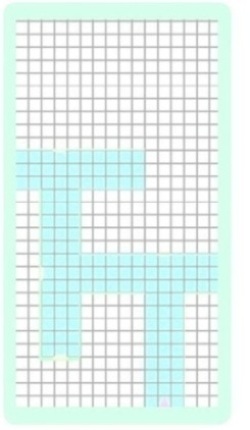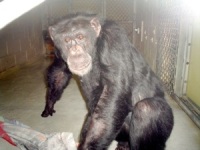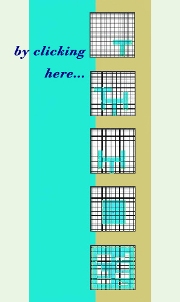
1. In designing a virtual maze or virtual open
space environment using theVR program, the designer is faced with a series of choices. First they can choose the size of the grid (e.g., 20x20, 30x30, 35x35), which specifies the absolute size of the virtual environment. The designer can then choose where to place either alleyways and their width and length (in the VR maze), or where to place 3D barriers/blocks that divide space (open space VR environment). Placement and orientation of landmarks (where they are located in the maze or open space, and direction of facing – north, south, east, west) and type of landmarks (2D, 3D, size, shape, color, etc) is flexible within the program, as is the placement of the start position and its orientation. Auditory feedback (e.g., bell sound) can be chosen to play at any point in the maze/open space environment. For example, in all training and testing conditions on reaching the goal, a short bell sound is given prior to a food reward (for the chimpanzees) or a verbal reward for human participants.
In the following experiments, positive, negative and neutral landmarks will be presented for directional information of goal locations. Positive landmarks designate correct directional information, correct route, and proximity of the goal (a 2D centered blue square within a white square hanging against a wall or barrier); negative landmarks signify incorrect directional information and distance from the goal (a 2D centered brown triangle within a white square hanging against a wall or). Neutral landmarks do not provide directional information of any kind (Neutral Landmark 1: a 2D square of black and white checkerboard pattern; and Neutral Landmark 2: a 2D square of alternating horizontal green and white stripes).


.jpg)
.jpg)
.jpg)
.jpg)
.jpg)
.jpg)
.jpg)
.jpg)
.png)
.png)
.png)
